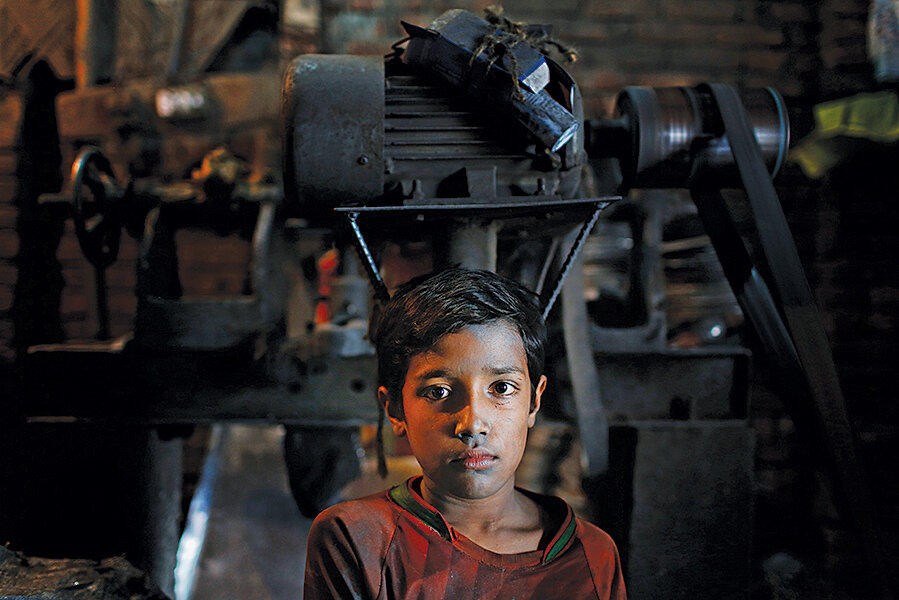What all consumers must know
Loading...
Labor is the most basic form of trade. Since before humans started to consider themselves human, they have bartered their time and skill for food, clothing, and shelter. That’s a good thing as long as the trade-off is fair. There are plenty of places where it isn’t.
Sometimes, bosses exploit a surplus labor market, denying workers a living wage. It gets worse. Earlier this year, the Monitor examined human trafficking – in effect, modern slavery (click here). More recently, we've looked at child labor (click here), which the International Labor Organization estimates affects 168 million young people between the ages of 5 and 17.
As you should expect – given the progress that is being achieved (and chronicled by the Monitor and other nonsensational publications) in such areas as global health, education, safety, and justice – the number of exploited kids has been falling sharply in recent years. Today there are a third fewer than in 2000. That number must continue to drop, however, not just because of the unconscionable exploitation of children – the loss of childhood, the coercion of the young and vulnerable – but because of the cycle of poverty it perpetuates. When a child is pressured into working, he or she isn’t going to school. That usually consigns a child to a lifetime of low-wage jobs or outright poverty.
As Michael Holtz’s article shows, the forces that bring children into the workplace often seem irresistible. An earthquake devastated Nepal last year. Families were left homeless, children parentless. Rebuilding created a huge demand for bricks, which meant a huge demand for workers forming, baking, packing, and transporting them. That’s menial work. Kids can do it cheaply or sometimes for nothing if they are helping out family members. As many as 60,000 children work at kilns across the country.
So Nepal is a test case. Reformers are trying to persuade builders to buy bricks only from companies that are certified as child labor-free. If that succeeds in a place where the conditions seem aligned to promote child labor, it could have a big effect elsewhere in the world.
Have you noticed a running Monitor theme here? From food to clothing, electronics to domestic help, we’ve been reporting that the era of blissful consumer ignorance is, or should be, over. End users of everything from shirts to shrimp, chocolate to diamonds can consider what went into the thing they are buying. Were people paid a fair wage? Were animals treated humanely? Was the environment damaged? Do the components and ingredients comport with our ethical standards?
A brick is not just a brick. Someone’s hands formed it. Somewhere in the supply chain, our brick or smartphone might have benefited from labor that we would not be comfortable with if we knew the story behind it. We can now know. A few places to start: Ethicaltrade.org, Goodguide.com, Avoidplugin.com, Apparelcoalition.org.
But mostly, we can think before we buy. Price, quality, prestige – they’re important. But fairness, too, is an important measure of a product’s worth.






